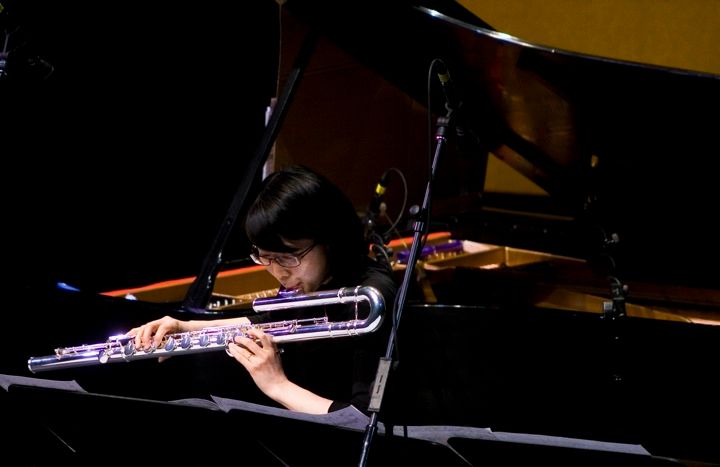This week, the Slee Sinfonietta presents their first concert of the Spring season, conducted by UB Percussion Professor, Tom Kolor. The program brings together two works from a pair of seminal American experimentalists: John Cage and Earle Brown. The Sinfonietta's program combines two large-scale works by these artists which, while less well known than some of their more famous pieces (e.g., Imaginary Landscapes or Folio), offer a distinct and unique perspective on the insights and accomplishments of these two important composers.
 |
| Earle Brown - Novara |
The program begins with Brown's Novara (1962), for flute, bass clarinet, trumpet, piano, and strings. The piece was originally commissioned by Lukas Foss for a Fromm concert at the Tanglewood Festival, where the premiere was conducted by Brown himself. The conductor plays a unique role in Novara: in this "open form" or "mobile" piece, all the musical possibilities are notated by the composer and laid out before the performers as a series of events (in numbered boxes). The conductor, as the composer explains, "is free to conduct the events in any sequence or juxtaposition, in changing tempi, loudness, and in general mold and form the piece." The virtuosity of Brown's compositional technique is on display in the flexibility and malleability of his musical material. In the Sinfonietta's performance, Kolor will guide the ensemble in spontaneous, on-the-spot decisions about how to realize the piece. The work therefore becomes a collaboration between composer and conductor—and the specific realization changes from performance to performance. This open approach to form, while still relying on a fixed underlying structure, was something Brown found inspiration from in other media:
The concept of the elements being mobile was inspired by the mobiles of Alexander Calder, in which, similar to this work, there are basic units subject to innumerable different relationships or forms. The concept of the work being conducted and formed spontaneously in performance was originally inspired by the "action-painting" techniques and works of Jackson Pollock in the late 1940s, in which the immediacy and the directness […] produces such an intensity in the working and in the result.
 |
| Merce Cunningham & John Cage |
The concert will conclude with Cage's Sixteen Dances (1951), for flute, trumpet, four percussionists, piano, violin, and cello. This 50-minute work was originally used to accompany Merce Cunningham's dance piece, Sixteen Dances for Soloist and Company of Three. Cunningham's choreography was concerned with expressive behavior, specifically, as the artist explains, "the nine permanent emotions of Indian classical aesthetics, four light and four dark with tranquility the ninth and pervading one." The piece's structure is designed to feature or illustrate each emotion (alternating light/dark) with interludes acting as bridges between each movement (i.e., each emotion). Cage's compositional approach in the Sixteen Dances was unique—it being the last piece he composed before turning emphatically toward chance procedures. For this work, he created a "sound gamut", a collection of 64 isolated sound events which he laid out on an 8x8 chart. Then, as James Pritchett explains, "Composition […] became a matter of moving from place to place on the chart, picking one sound out after another, then stringing them together rhythmically into phrases." The resulting piece is generally sparse in texture, but often rhythmic, quickly-moving, and light on its feet (as one would expect of a dance). It's whimsy and levity are often underscored by a poignant mystique characteristic of much of Cage's early work, with frequent repetition and subtle variations underscoring the objectivity of the musical material.
It was the aforementioned act of composing according to chart movements that eventually led Cage to chance music: "Somehow, I reached the conclusion that I could compose according to moves on these charts instead of according to my own taste."
After this exciting program, the Sinfonietta is only getting started. They will also be among the many resident ensembles at June in Buffalo 2016, where they'll perform a full concert of works by JiB faculty composers. Meanwhile, members of the Sinfonietta will help realize new works by the participant composers. It will be an exciting week in which the ensemble continues to live up to its mission to bring important works, new and newer, to fruition.

